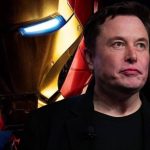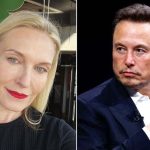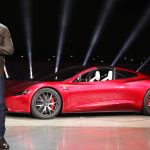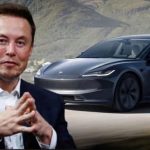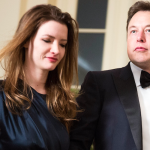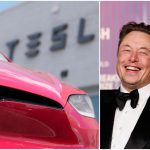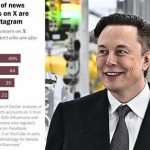Elon Musk: From Electric Vehicles to Solar Energy – The Green Revolution and Its Hidden Sides 🌍

Elon Musk: From Electric Vehicles to Solar Energy – The Green Revolution and Its Hidden Sides 🌍
Elon Musk—a name synonymous with innovation, ambition, and disruption—stands as a towering figure in the tech and business world, often hailed as a crusader against climate change. Through Tesla’s electric vehicles (EVs) and SolarCity’s solar energy solutions, he’s painted a vision of a cleaner, greener future, inspiring millions and rattling industries. But beneath the glossy headlines and soaring stock prices, a question lingers: do his contributions truly deliver the environmental salvation we imagine, or are there shadows lurking behind the shine? This article dives deep into Musk’s “Green Footprint,” dissecting the triumphs of Tesla and SolarCity, while peeling back the layers of controversy and challenge that complicate the narrative. Buckle up—we’re exploring the highs, the lows, and the hidden sides of Musk’s eco-empire.
Tesla: The Electric Vehicle Revolution and the Green Dream
Tesla’s ascent is nothing short of a revolution—a seismic shift that’s redefined the automotive landscape. Before Musk took the helm in 2004 (and became CEO in 2008), electric vehicles were the punchline of car culture: slow, boxy, and lucky to limp 100 miles on a charge. Tesla flipped the script with the Roadster in 2008—a sleek, sexy sports car boasting over 200 miles of range and a 0-60 mph sprint in 3.7 seconds. It wasn’t just a vehicle; it was a statement. The Model S (2012), Model 3 (2017), and beyond cemented the deal, proving EVs could be luxurious, powerful, and practical, with ranges topping 400 miles by 2025. By that year, Tesla’s delivered over 5 million EVs worldwide, turning the “green dream” into a concrete reality.
The ripple effect is undeniable. Tesla’s success lit a fire under traditional automakers—Ford, GM, Volkswagen, and Toyota—who’ve poured billions into their own EV programs. The market’s buzzing with options: Ford’s Mustang Mach-E, VW’s ID.4, and GM’s electric Hummer, to name a few. Competition’s driven prices down—entry-level EVs like the Model 3 now start at $35,000 with incentives—and adoption up, with EVs hitting 10% of U.S. sales and 20% globally by 2025. The environmental win? Transportation, a top CO2 emitter, is shedding its fossil fuel skin—Tesla alone has slashed 25 million tons of emissions since 2008, per company estimates. It’s a green wave, and Musk’s the guy who started the surf.
But hold the applause—Tesla’s “green dream” isn’t spotless. Battery production, the heart of every EV, is a messy business. Extracting lithium, cobalt, and nickel scars the Earth—think open-pit mines in Australia or Chile, where water tables drain and ecosystems fray. Cobalt mining in the Democratic Republic of Congo (DRC), which supplies 60% of the world’s stock, often involves child labor and toxic runoff, sparking ethical firestorms. Tesla’s pledged to source responsibly (e.g., cobalt-free LFP batteries in some models), but the supply chain’s still murky. Then there’s recycling: lithium-ion batteries degrade after 10-15 years, and only 5% are recycled globally due to costly, inefficient processes. Without breakthroughs—like Tesla’s promised “Battery Day” tech—piles of dead cells could clog landfills, mocking the green label. The revolution’s real, but it’s got a dirty underbelly.
SolarCity: Solar Energy for Every Home?
SolarCity, co-founded by Musk in 2006 with his cousins Peter and Lyndon Rive, aimed to sprinkle sunshine-powered magic across rooftops everywhere. The pitch? Affordable solar panels and systems to cut electricity bills and carbon footprints for homes and businesses. By 2016, when Tesla swallowed SolarCity for $2.6 billion, it was a top U.S. solar installer, with over 300,000 setups lighting up grids. The merger birthed a bold vision: a sustainable energy ecosystem where Solar Roof tiles generate power, Powerwall batteries store it, and Teslas run on it—a closed loop of clean energy bliss.
The impact’s tangible. By 2025, SolarCity’s legacy (now Tesla Energy) powers millions of homes, with Powerwalls installed in over 500,000 households. Solar Roof tiles, sleeker and 20% more efficient than 2018 designs, have turned rooftops into mini power plants, slashing reliance on coal and gas. In California alone, solar adoption—boosted by SolarCity’s early push—cuts 10 million tons of CO2 yearly. It’s not just tech; it’s a lifestyle shift, nudging society toward renewables one sunny panel at a time.
Yet the SolarCity story’s got its own storm clouds. The 2016 Tesla buyout sparked a firestorm—critics, including shareholders who sued (settled in 2020 for $60 million), claimed Musk bailed out a floundering SolarCity to prop up his family’s venture. At the time, SolarCity was bleeding cash—$1.5 billion in debt—and losing market share to cheaper rivals. Was it a green synergy or a corporate lifeline? Musk insists it was strategic, but the optics stung. Installation hiccups (delays, faulty panels) and high upfront costs—$20,000+ for a typical system—also kept solar out of reach for many, tempering the “every home” promise. Still, SolarCity’s role in mainstreaming solar can’t be erased—it’s a cornerstone of Musk’s green mosaic, flaws and all.
Hidden Sides and Challenges
Musk’s green crusade shines bright, but shadows lurk beneath the surface. Tesla’s Gigafactories—Nevada, Shanghai, Berlin—are marvels of scale, pumping out 2 million EVs yearly by 2025. But building them guzzles energy and resources—Nevada’s plant alone consumed 3 million cubic yards of concrete and untold steel, with construction emissions rivaling a small city’s. Battery production’s carbon footprint is hefty too—studies peg it at 50-100 kg CO2 per kWh of capacity, meaning a 100-kWh Model S battery emits 5-10 tons before it even rolls out. Tesla’s pushing renewables (solar panels atop Gigafactories), but the grid’s dirty mix—coal in China, gas in Texas—dulls the green sheen.
Beyond production, Musk’s eco-focus feels narrow to some. Biodiversity? Plastic waste? Crickets. While he’s obsessed with high-tech fixes—EVs, solar, SpaceX’s Mars escape plan—he’s mum on low-tech wins like reforestation or recycling drives. Critics argue he’s a futurist chasing shiny toys while sidestepping Earth’s messier problems. Take SpaceX: 300+ launches by 2025 cut space costs, but rocket fuel (kerosene, methane) spews CO2 and black carbon into the stratosphere—small now, but a growing worry if Musk’s 100-launch-a-year Mars dream takes off. The Boring Company’s tunnels? Cool, but concrete-heavy and energy-intensive to dig. Musk’s green, but not that green—his lens is selective, his solutions bold yet incomplete.
Then there’s the man himself. Musk’s X rants—like dismissing climate activism as “virtue signaling”—clash with his green gospel, hinting at a pragmatist more than a purist. His $200 billion net worth (2025) screams success, but some whisper it’s less about saving Earth and more about riding the green wave to riches. Tesla’s $1 trillion valuation and SpaceX’s $350 billion tag dwarf SolarCity’s modest gains—profit’s a big driver, even if emissions drop along the way.
Conclusion: A Complex Green Legacy
Elon Musk is a paradox—a visionary whose green tech has jolted industries awake, yet a figure whose footprint is muddied by trade-offs and blind spots. Tesla’s EVs have slashed 25 million tons of CO2, SolarCity’s panels power a renewable shift, and his influence has dragged automakers and energy firms into the 21st century. By 2025, 10% of U.S. cars are electric, and solar’s share of energy doubles—stats that owe a nod to Musk’s relentless push. He’s no bystander; he’s a catalyst, wielding innovation like a hammer against climate chaos.
But the halo’s not spotless. Battery mining scars landscapes, Gigafactories belch emissions, and Musk’s gaze skips over nature’s quieter cries. Is he an environmental “savior”? Not quite—salvation’s too pure a word for a story this tangled. A talented businessman capitalizing on green trends? Sure, but that’s only half the tale—he’s not just cashing in; he’s changing the game. The truth likely lies in the long haul—decades from now, when Tesla’s EVs outnumber gas guzzlers, when Solar Roofs blanket suburbs, or when battery recycling cracks wide open. Only then can we weigh the scales: emissions cut versus ecosystems bruised, profits stacked against planet healed.
For now, Musk’s “Green Footprint” is a mixed masterpiece—brilliant strokes of progress shadowed by gritty flaws. Love him or loathe him, he’s not slowing down, and neither should our scrutiny. So, what’s your take—is he the green hero we need, or a savvy tycoon in eco-clothing? The future’s watching, and Musk’s still got plenty of cards to play. 🌍
